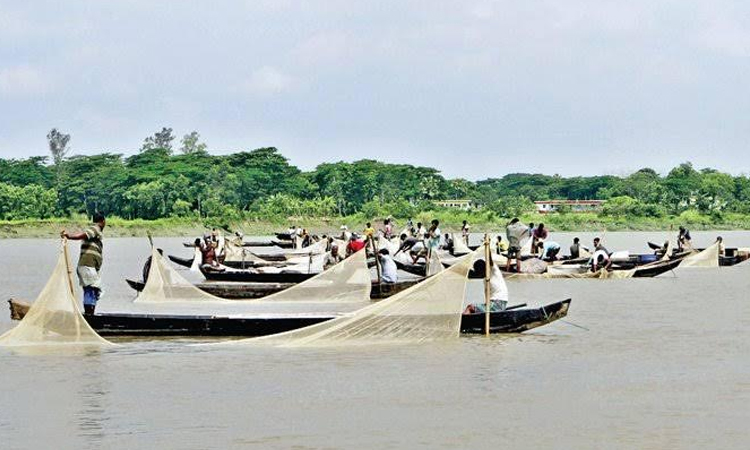News Flash
News Flash

By Mah Alam
JAHANGIRNAGAR UNIVERSITY, July 8, 2025 (BSS) - Rapid land use changes in the Halda River Basin, driven by population pressure and urban expansion, are posing serious threats to the region's ecosystem and local livelihoods, a new study has warned.
The research, titled "Population Dynamics and Land Use Changes: A Case Study of Halda River Basin, Bangladesh", was conducted by Prof Dr Mohammad Mahbub Murshed of the Geography and Environmental Studies Department at Chittagong University. It was published in the June, 2025 edition of the Jahangirnagar University Environmental Bulletin.
The research focuses on three upazilas-Hathazari, Raozan, and Fatikchhari of Chattogram District-and examines land use and demographic changes in the Halda River Basin from 2001 to 2022.
The Halda River is ecologically and economically important. It is the only natural breeding ground situated in the Chittagong region of Bangladesh for Indian major carps like ruhi, katla, and mrigal. It supports traditional fish fry collection and contributes to local livelihoods.
Using satellite imagery from Landsat and GIS analysis, the study classified land into five categories: agricultural land, forest, built-up areas, wetlands, and water bodies.
The research found that agricultural land in the basin fell from 55.69 percent in 2001 to 43.87 percent in 2022.
Forest cover dropped from 32.45 percent to 24.27 percent during the same time.
On the other hand, built-up areas increased dramatically-from 4.93 percent to 23.47 percent-over the 21 years.
Wetland and water body areas declined slightly. Wetlands shrank from 6.93 percent to 6.52 percent, and water bodies decreased from 2.00 percent to 1.87 percent.
The population in the three upazilas rose from 891,409 in 2001 to 1,296,387 in 2022, according to data from the Bangladesh Bureau of Statistics used in the study.
The researcher states that the population increase has created more demand for housing, transportation, and local infrastructure. This demand has resulted in converting forests and agricultural land into built-up areas.
"Population growth in the basin is reshaping land use patterns," said Prof Murshed. "As the need for settlements and infrastructure grows, land used for agriculture and forest cover decreases."
While the study does not directly evaluate water quality or biological factors, it indicates environmental stress due to the loss of vegetative land and the expansion of built areas, especially near rivers and roads.
This trend could change the ecological character of the basin, which is closely tied to the river's fish spawning functions and local livelihoods that depend on natural resources.
Many communities in the basin depend on farming and seasonal fish fry collection for income.
The loss of agricultural land may impact farming-related jobs, while any disturbance to the river system could affect fishing activities.
"The changing land cover has consequences for jobs, particularly in agriculture and fisheries," Murshed explained.
The study warns that further loss of land for farming or ecological use could reduce livelihood options for rural communities, though it does not provide employment statistics.
The analysis also revealed that land transformation is most noticeable near transport corridors and riverbanks-areas essential for both economic and ecological activity.
"The responsible authorities can take measures such as introducing a zoning system to protect farmland and forests, and promoting ecological restoration in degraded areas. Furthermore, access to the forests surrounding the Halda River should be strictly limited, with only security personnel allowed entry to ensure the protection of sensitive ecosystems," said Dr Murshed, suggesting the planning measures to tackle these changes.
The study also stresses the importance of considering population trends in regional and environmental planning processes.
"Balanced development needs to connect land use planning with population trends and ecological needs," Prof Murshed added.